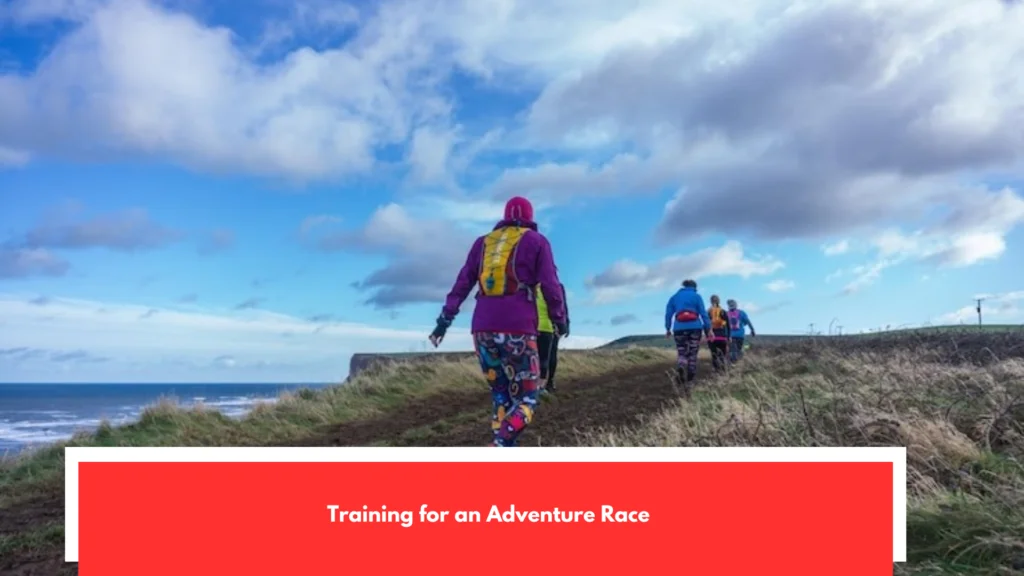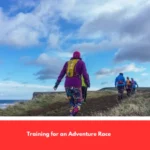Do you want to shape up but can not get the motivation? What about this: you choose to train with a group that has a Physical Educator. The team aim is to reach into shape with a proper target, surviving all difficulties in the nature. Which challenges are we referring to? We will set a date of sequence of Adventure Race, Trail Running, Mountain Bike, Orienteering or Kayak. We shall begin with easy challenges and then go up the ladder. Training for an Adventure Race includes two days of strength training on your own, and one day with your group out in nature to exercise. Does that sound good to you? Welcome to Adventure Training!
Mud, dirt, rocks, branches. Mountain trail running is an amazing experience, and extremely different than running in the big city. And when you have settled on giving trail running a go, you will have realized that there are some differences compared to asphalt running: where yesterday you were used to running a half marathon in an hour and a half, today you take more than 20 minutes to climb a pathetic kilometer on a ski track in the mountains. However, this form that we are all familiar with as trail running presents an interesting challenge to any running enthusiast.
How Do You Train for an Adventure Race?

And you can cover still the distance you are accustomed to, only with the bonus of uphill and steep landscape. Also, the conditions on the mountain trails fluctuate every season to another, so one should expect a new challenge every time they turn a corner. To which is to be added, that even the elements you will necessarily find in your path, as branches, stones, rivers, will be continuously changing.
Trail running has until recently been a niche sport, but now is the time when increasingly more people are deciding to give it a go, so there are increasingly more of such events on the annual calendar. The reason is that there is a shift in our mentality. It is not true. You probably will not be able to run the whole race, and that does not make it not a race. Mountain trails running is challenging, and you will need to make an effort much more than on asphalt.
Train Individual Disciplines

That’s good. Before you jump into the scene of trail running, the initial thing you ought to understand is what you are getting yourself into. The thing is you cannot do is to register to a mountain race when you have never ran on such kind of ground. The emotions and the magnificent views are also promised, however, to compete and not to be afraid of getting injuries in case you are a novice, a set of specific considerations should be made.
The most simple is the alphabet: with one foot raised, keep the other in motion, tracing the initials of the alphabet. It can be with open or closed eyes, in trail shoes or barefoot. Intervals are certainly one of the exercises that every runner must incorporate into his/her program, be it running on asphalt, in the city, or on the track. Here, swim 8 to 12 sets of 200 meters at R4 speed.
Mountain Biking

Recover between sets by going back to the starting point running at R1. The descent gradient must not be more than 3-4%. Perform exercises on specific strength and proprioception. Locate a 50 meter distance, which is flat and rough. Perform running technique drills; skipping, heel to glute, push-offs and plyometrics with single-leg jumps, alternating legs every 2-5 jumps, or any static based warm-up exercise. Perform each exercise with 2 or 3 sets of 40 meters. Restore by walking the reverse distance. In this manner, you will train your elasticity.
Despite the fact that the landscape of the race is not even, you may perform this kind of session on asphalt or track. 4 to 6 sets of 1,200 meters at R4 pace, 3 minutes recovery at R2 pace. Long running is a training session that you can perform on asphalt, and preferably on a flat area. The distance should be ideally 12 km which you can cover e.g. 6 km at R2 pace and 6 km at R3 pace. It assist in working on lipid power. 10 x 100m R4 uphill dirt track 6-8%. Recover between sets by going back to the starting point with R2 speed. Following the final climb, take a recovery running at R2 pace 3 minutes and then, remaining on the ground, 10 sets of 200 meters at R5 pace with 2 minutes of R2 pace recovery between sets.
Conclusion

You train on particular strength and VAM. During trail running the whole body is more activated compared to road running because it has to stabilize the movement on the uneven surface as well as uphill and downhill. As such, stretches have to be performed at the conclusion of every session and core stability exercises and glute strengthening exercises have to be performed two to three times a week. It is necessary to practice in advance in order to become familiar with the race profile and the features of the tracks. Use these suggestions to face this difficulty like a pro.
The road is undulating and with constant changes of direction, and if by chance you encounter a straight stretch, you might have to go from side to side to overcome some other irregularity. That means it is essential to strengthen the lateral muscles, and the best exercises to train the legs and achieve that goal are lateral lunges, single-leg exercises, kettlebell deadlifts, or squats in any of their varieties. You will also need to do twisting exercises and those that improve balance. Simply standing on a balance disc will already improve this aspect and, at the same time, strengthen the ankles, which is very important for tackling different types of terrain. Equally useful are exercises that work on agility, such as placing a ladder on the ground to do lateral speed exercises.





